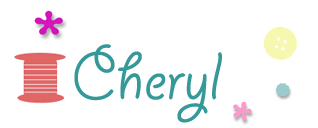It's even got a fun textured feel to give it some extra detail:
Now, onto Stencil Success 101:
Get a good stencil. Not all stencils are the same. Some can be really thin and filmy which is much harder to work with and too delicate to reuse. I was asked by Stencil Revolution if I wanted to try some of theirs out, no strings attached, so I chose this pretty fairy moon design (you can find it here). Their designs are all 10 millimeter mylar, so it was nice and sturdy. I've used it 3 times now and it's still in great shape.
Wash & iron that fabric! It's really important that the fabric accepts the paint well. It's so tempting to just start painting, but don't! Washing it first removes any factory sizing, dust or dirt that can keep the paint from sticking. If the item is going to need washing in the future it's a vital step. There's nothing worse than painting something beautifully and then it starts wearing off after you wash it. After pre-washing, get that fabric as flat and smooth as possible with a good ironing too. I used a basic black tote from the craft store.

Use adhesive spray. Painting on fabric has a higher chance of bleeding and shifting, so good adhesion is key for getting nice smooth edges. For mylar stencils, stencil spray or spray adhesive is the secret. Coat evenly on the back - especially around the tiny detail areas of the design, wait a minute for it to dry and then press into place.
Use the right paints. Some people say any old acrylic paint is fine, but for fabric it's important that the paint is pliable and washable so it doesn't look stiff, crack or wear off. There's a fabric medium you can add to regular paints and I've used it before, but it's easier, cheaper and more effective just to get paint that's made to work with fabric. I decided to try out something new - Fabric Creations Plush paint from Plaid - that is meant for fabric. It cost twice as much as the basic fabric paints, but since it was supposed to plump up and add texture, I figured it was worth the splurge at the craft store to try.
Use the right brushes. Dabbing up and down with a sponge pouncer adds the paint without seeing brushstrokes or bleeding the design. After dipping it in the paint, dab the excess off and then get painting.
Pounce away. Start at the edges and work inward to get a first coat and then go back over thinner patches. You can always add more paint, but if you put too much right away you're out of luck. Since I was doing two colors, I did the smaller sections first with a little pouncer so there'd be less chance of overlapping colors.
Remove the stencil while wet. Peel away the stencil while the paint is still wet, when it's still easy to touch things up and avoid the paint drying and acting like glue between the fabric and the stencil. Because I was using a textured paint, I needed to make sure I got a good solid coat of paint on and was able to see that better, and add extra bits where needed, when the stencil was off.
Clean the stencils right away. Paint dries mega fast on stencils and can be really hard to get off all the little nooks & crannies at that point. Dried paint build up means the design won't come out as crisp the next time around too. I find it easiest to use dish soap and a brush to get paint off quickly. For the adhesive on the back I use Goo Gone and a paper towel and it's nice and smooth again in no time without having to scrub like crazy.
After my paint dried and had 24hrs to cure, it was time to "plush it up". I turned my bag inside out and steam ironed it according to the paint directions. I went over it a few times to be sure I was doing enough.
What started off as a flat design like this:
Turned into this puffier textured effect, which is pretty cool. It works best with a good amount of paint (two good coats) and a fabric that isn't too thick, like this thinner tote.
I stitched a little star button to the wand, to add to the dimensional look, and now we've got a sweet fairy bag to take out and about and I've gotten some stencil savvy. Win-win!

I was not financially compensated for this post. I received my choice of stencils from Stencil Revolution to use as I desired. The opinions are completely my own based on my experience. For my complete disclosure policy, click here.














Wow, Cheryl, you couldn't have timed this post better! I'm having three of the "girls" over tomorrow afternoon to stencil on flour sack towels. I plan to show them you post before we start! Thanks for the tips,
ReplyDeleteCheryl
Awesome! So glad to be able to help. Hope they turn out great:)
DeleteHola Cheryl, muchísimas gracias por la información, tomo nota.
ReplyDeleteLa bolsa te ha quedado de lujo.
Ese hada me recuerda a las nubes golosinas que están tan esponjosas, y por cierto, buenísimas😂.
Enhorabuena por ello. Besos y feliz verano!!!